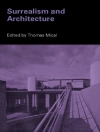Daylight is the most important element determining the mood and appearance of architecture, more so than all construction materials. In office buildings in particular, the good provision of daylight and matching artificial lighting installations make an important contribution to energy conservation – the better the use made of daylight, the less energy has to be consumed for artificial lighting. For this reason, typical architectural concepts have changed in recent years; enclos...
O autorze
Roman Skowranek, architect, VSI Verfürth Architekten, Bottrop, Germany.
Kup ten ebook, a 1 kolejny otrzymasz GRATIS!
Język Angielski ● Format EPUB ● Strony 80 ● ISBN 9783035613025 ● Rozmiar pliku 11.1 MB ● Redaktor Bert Bielefeld ● Wydawca Birkhäuser ● Miasto Basel/Berlin/Boston ● Opublikowany 2017 ● Ydanie 1 ● Do pobrania 24 miesięcy ● Waluta EUR ● ID 6644339 ● Ochrona przed kopiowaniem Adobe DRM
Wymaga czytnika ebooków obsługującego DRM












